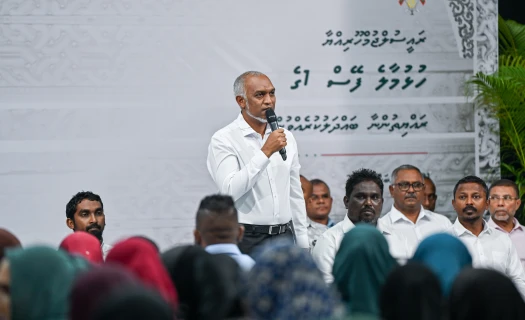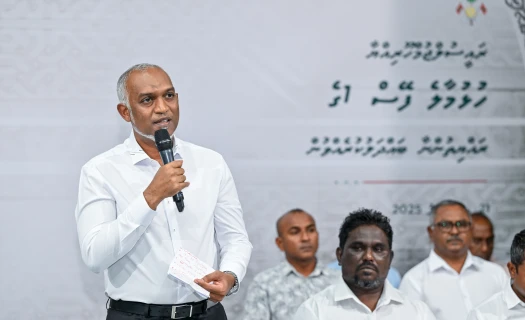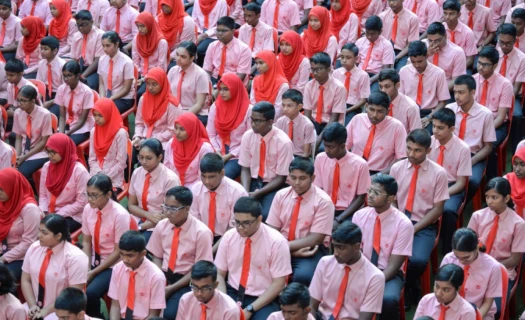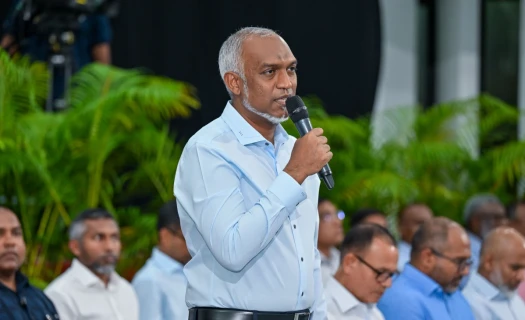Mon, 22 Dec 2025
|DHIVEHI
2004 Tsunami: Birth of the Maldivian Red Crescent
26 Dec 2024
|

Photo: Maldivian Red Crescent
The catastrophic tsunami of December 26, 2004, led to the establishment of the Maldivian Red Crescent (MRC), now the largest humanitarian organisation in the Maldives.
The disaster, triggered by a devastating earthquake in Sumatra, Indonesia, became the most devastating natural disaster in Maldivian history, leaving countless residents homeless and causing severe financial devastation.
The MRC, officially inaugurated on August 16, 2009, operates as an independent, voluntary humanitarian organisation under Law Number 7/2009. Its mission focuses on delivering humanitarian services to the vulnerable, with the vision focusing on becoming a model National Society that contributes to overcome humanitarian challenges. The organisation achieved full membership in the International Federation of Red Cross and Red Crescent Societies (IFRC) by November 9, 2011.
In response to the initial disaster, foreign humanitarian organisations, local associations, and Maldivian volunteers launched comprehensive relief efforts, with the International Red Cross, Maldives Scout Association, and Girl Guide Association playing pivotal roles in delivering aid. The International Federation of Red Cross (IFRC) provided crucial assistance during this period, which led to the establishment of the MRC. This initiative, operating at both international and national levels, garnered significant attention and attracted numerous volunteers eager to contribute.
The organisation's establishment process spanned from 2005 to 2009, culminating in the People's Majlis (Maldivian Parliament) passing the founding bill on April 28, 2009, which was subsequently ratified and published in the Gazette by the President.
The MRC has since implemented various programmes, including Emergency Response, Disaster Preparedness, Epidemic Preparedness and Response, First Aid, Mental Health and Psychosocial Support, Patient Transport Services, Social Care and Inclusion, Promoting Healthy Living, and Youth Empowerment.
In an interview with MMTV, Umar Fikry, Deputy Chief of the National Disaster Management Authority (NDMA), highlighted how the tsunami disaster demonstrated the importance of collaborating with the International Red Cross and Red Crescent in building resilient communities.
He identified the development project of Raa Dhuvaafaru as one of Red Crescent's most significant undertakings: "Taking one island and developing housing, establishing municipal service buildings, a school, water and sewerage systems – doing all of this in one project was one of their biggest projects to date".
"When the tsunami disaster struck, there was no national society of the International Red Crescent and Red Cross Movement established in the Maldives. Despite the challenges this posed for international Red Cross and Red Crescent organisations operating here, they nevertheless arrived and conducted extensive work," Umar explained.
Looking forward, the MRC plans to develop disaster risk reduction plans for 15 islands over the next two years, whilst establishing medical response teams and volunteer firefighting teams to form Community Emergency Response Teams.
"Initially, both organisations worked to improve our services in disaster response, and as we became better at providing these services, we have now expanded our joint efforts to work on reducing disaster risks," Umar noted, reflecting on the organisation's evolution.
Over the past 15 years, the MRC has led several humanitarian assistance efforts in the country, building the capacity, knowledge and skills needed for island-level networks whilst fostering cross-sector institutional collaboration and developing more effective operational methodologies.


Popular News







